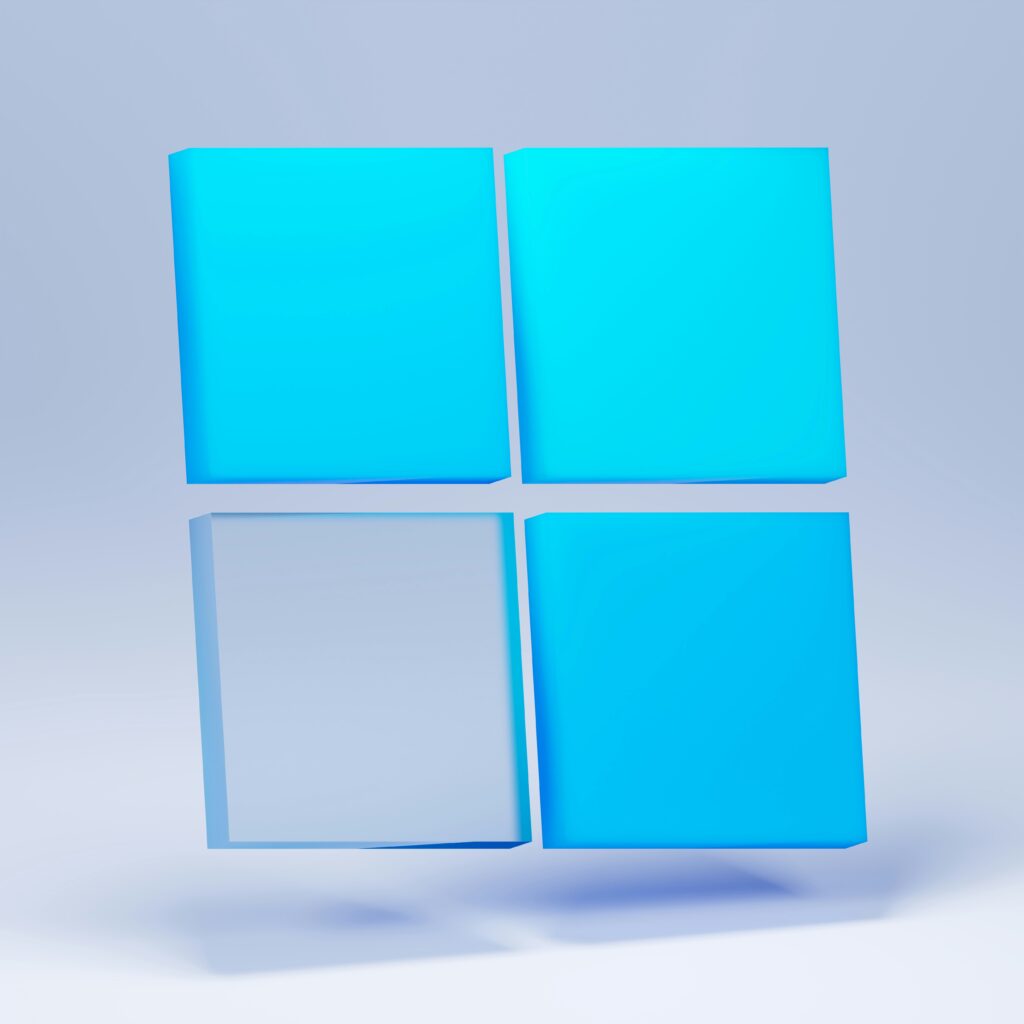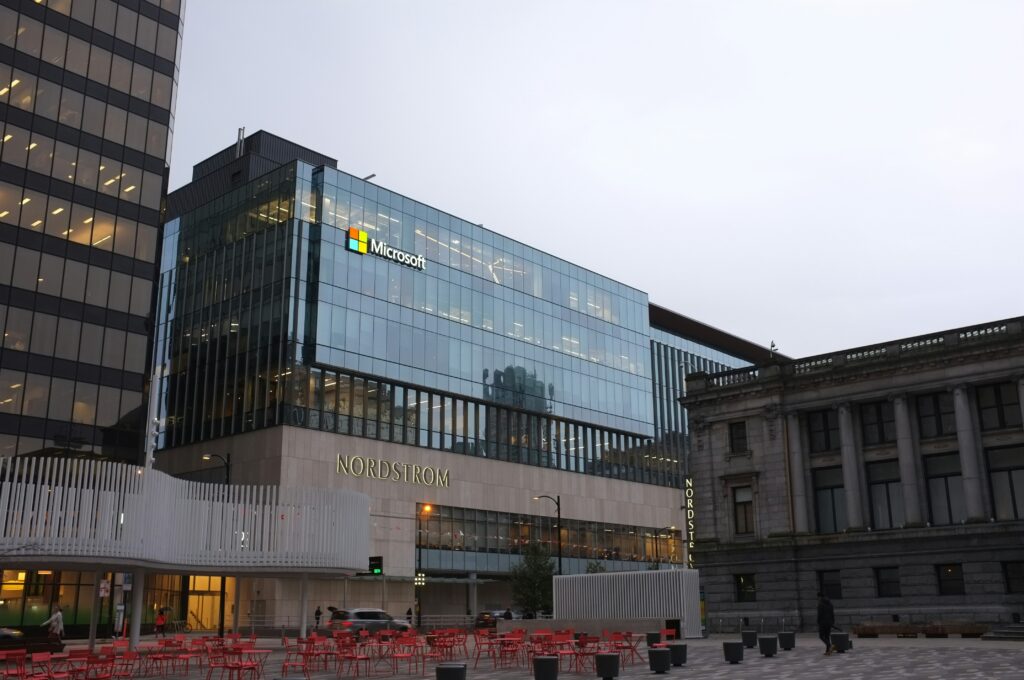Microsoft Logo: Meaning, History, Design Influences, and Evolution

Contents
The Microsoft logo is a symbol that represents one of the most iconic and influential tech companies of our time. It has undergone numerous transformations over the years, each representing different aspects of Microsoft’s journey. To truly appreciate the significance of the logo, it is essential to understand its meaning, the symbolism in its design, its historical context, the design influences that have shaped it, and its evolution.
Understanding the Microsoft Logo
Before diving into the various aspects of the logo, it is crucial to grasp its essence. The Microsoft logo is not just a visual representation; it encompasses the values, vision, and identity of the company. It is a powerful symbol that resonates with millions of users worldwide, embodying Microsoft’s commitment to innovation, excellence, and progress.

Delving deeper into the intricacies of the Microsoft logo unveils a rich tapestry of symbolism and intention. Beyond its surface aesthetics, the logo serves as a beacon of Microsoft’s enduring legacy in the tech industry and its unwavering dedication to shaping the future of computing.
The Meaning Behind the Logo
Every design element of the Microsoft logo has a purpose and meaning. The logo features a colorful, stylized window, known as the “Window Four-Pane.” This window represents Microsoft’s goal of providing users with a digital gateway to explore endless possibilities. The four colored panes symbolize diversity, inclusivity, and the broad range of products and services that Microsoft offers to people of all walks of life.
Moreover, the window motif encapsulates the concept of transparency and clarity, reflecting Microsoft’s commitment to open communication and accessibility in its products and services. It serves as a metaphorical portal through which users can peer into the boundless world of technology and innovation that Microsoft strives to cultivate.
The Symbolism in the Design
Beyond the window symbol, the Microsoft logo’s design holds deeper symbolism. The use of colors, shapes, and typography are all carefully chosen to convey specific messages. The vibrant colors signify innovation, creativity, and energy, reflecting Microsoft’s forward-thinking mindset. The fluid shapes and clean lines convey a sense of modernity, simplicity, and user-friendliness – qualities that define Microsoft’s approach to technology.
Furthermore, the typography in the logo is meticulously crafted to evoke a sense of balance between professionalism and approachability. The sleek, modern font conveys a message of reliability and sophistication, mirroring Microsoft’s position as a leader in the tech industry while remaining accessible and user-centric in its offerings.
The History of the Microsoft Logo
To truly understand the significance of the current Microsoft logo, we must explore its roots. The logo has gone through various iterations, evolving alongside Microsoft’s growth and transformation as a company.

The Original Logo: Microsoft’s Beginnings
In the early days of Microsoft, its logo featured a simple yet memorable design. It depicted the company name in bold, uppercase letters, and showcased a stylized “O.” This logo served as a testament to Microsoft’s commitment to innovation and technological advancement. It was a symbol of the young company’s determination to make a mark in the rapidly evolving world of technology.
Interestingly, the choice of colors in the original logo, a striking black and white combination, was deliberate. The stark contrast symbolized Microsoft’s focus on clarity and precision in its products and services. This minimalist approach not only made the logo visually impactful but also set the tone for Microsoft’s reputation as a no-nonsense, results-driven tech giant.
Logo Changes Over the Years
As Microsoft evolved and expanded its range of products and services, so did its logo. Throughout the years, subtle changes were made to reflect the company’s growth and adapt to shifting design trends. The logo gradually transformed, with iterations featuring different colors, fonts, and visual elements. These changes not only reflected Microsoft’s ever-evolving brand identity but also kept the logo fresh and relevant in an ever-changing digital landscape.
One significant evolution in Microsoft’s logo design was the introduction of the iconic “Pac-Man” logo in 1987. This version featured a bold, italicized typeface with a striking slash through the “O,” giving the logo a dynamic and modern look. The addition of vibrant primary colors symbolized Microsoft’s energy and innovation in the tech industry, setting it apart from its competitors.
Design Influences on the Microsoft Logo
Logo design is influenced by a multitude of factors, including corporate identity, design trends, and historical context. Microsoft’s iconic logo is a prime example of how these influences have shaped its visual identity over the years.
The Impact of Corporate Identity on Logo Design
Microsoft’s logo is not just a visual symbol; it is a representation of the company’s core values and mission. The evolution of the logo mirrors Microsoft’s journey as a technology giant, from its humble beginnings to its current status as a global powerhouse. By incorporating elements that reflect its corporate identity, such as the distinctive color palette and font choices, the logo serves as a visual anchor for the brand.
The Role of Design Trends in Logo Evolution
Design trends are like currents in a river, constantly flowing and shaping the landscape of visual communication. Microsoft’s logo has navigated these currents adeptly, adapting to the ever-changing design landscape while maintaining its essence. From the skeuomorphic designs of the past to the flat and minimalist aesthetics of today, the Microsoft logo has embraced different design trends to stay relevant and resonate with audiences worldwide.
Furthermore, the evolution of the Microsoft logo reflects not only design trends but also technological advancements. As Microsoft delved into new frontiers of innovation, such as cloud computing and artificial intelligence, the logo underwent subtle changes to signify this progress. This seamless integration of design and technology underscores Microsoft’s commitment to staying at the forefront of industry trends.
The Evolution of the Microsoft Logo
The evolution of the Microsoft logo is a testament to the company’s journey and growth. Each iteration represents a pivotal moment in Microsoft’s history and reflects the changing landscape of technology.
The Shifts in Design and What They Represent
Throughout its evolution, the Microsoft logo has seen significant design shifts. From the early days of simplicity to the more vibrant and dynamic present, each change carries deeper meaning. It represents Microsoft’s willingness to adapt, innovate, and stay ahead of the curve in an ever-competitive industry. The shifting design elements are a visual representation of Microsoft’s continuous drive for improvement and its commitment to delivering cutting-edge technology to users worldwide.

The Current Logo and Its Significance
The current Microsoft logo represents the culmination of decades of innovation and growth. Its clean lines, vibrant colors, and iconic window symbol encapsulate the essence of the company. It is a symbol of Microsoft’s commitment to empowering individuals and organizations through technology, and a reminder of the endless possibilities and opportunities that lie ahead.
In conclusion, the Microsoft logo is far more than just a visual representation. It is a representation of the company’s values, its history, and its commitment to delivering groundbreaking technology. It embodies diversity, innovation, and progress. The logo’s evolution mirrors Microsoft’s journey, adapting to the ever-changing technological landscape while remaining true to its core principles. It is a symbol that continues to inspire and resonate with millions of users worldwide.
Just as the Microsoft logo has evolved to become a beacon of innovation and a reflection of its core values, your brand deserves a logo that encapsulates your unique vision and identity. With Boon, you can harness the power of Artificial Intelligence to create a custom logo that resonates with your audience and strengthens your business. Whether you’re looking to engage users, tell a compelling story, or stand out in your industry, Boon makes it simple and swift. Let’s make a logo! and watch your brand come to life in just five minutes.

Mia Vargas is our Senior SEO & Branding Specialist, a dynamic force in digital strategy with a keen eye for brand storytelling. With over a decade of experience in optimizing online visibility and shaping brand identities, Mia seamlessly combines her technical SEO expertise with her passion for creativity. She is skilled at crafting strategies that not only elevate search rankings but also resonate with target audiences, ensuring our clients build meaningful, lasting connections. Known for her innovative approach and trend-focused insights, Mia plays a crucial role in driving our team to stay ahead in a rapidly changing digital landscape, balancing analytics with artistic flair to deliver impactful results.
